Evolution of wind energy in Europe
Wind, the best commitment to our future
Offshore wind Onshore wind Renewable energy
The European wind market has grown strongly over the last 25 years. Continuous technological advances and improved generation rates have driven down costs, and wind energy has now established itself as a key driver of the continent's green transition.
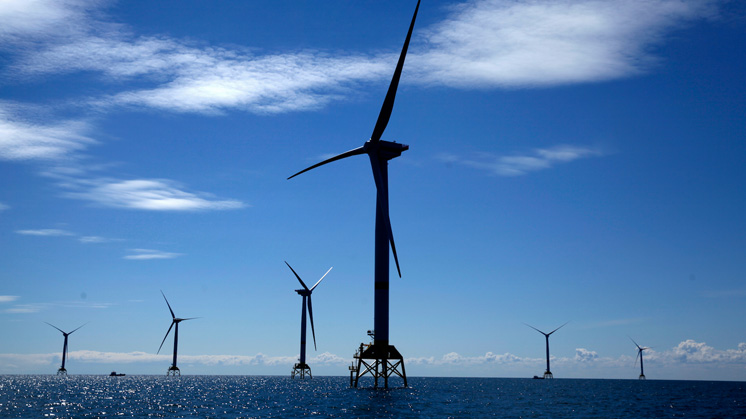
Wind energy is growing in Europe in the face of economic challenges, but there is still a lot of work to be done. The conclusion is drawn from 'Wind Energy in Europe: Prospects for 2022-2026' External link, opens in new window. , the annual report produced by WindEurope –the European wind industry association. According to the study, the European wind sector had a record year in 2022 (the last year for which data is available) with 19.2 new gigawatts (GW) of capacity, split between 16.7 GW of installed onshore and 2.5 GW offshore wind capacity.
External link, opens in new window. , the annual report produced by WindEurope –the European wind industry association. According to the study, the European wind sector had a record year in 2022 (the last year for which data is available) with 19.2 new gigawatts (GW) of capacity, split between 16.7 GW of installed onshore and 2.5 GW offshore wind capacity.
Despite the difficult economic environment and supply chain difficulties, the continental wind farm has seen a 4 % increase in installations compared to the previous year. However, despite the progress, the organisation warns that the rate of installation is not sufficient to reach the wind target (480 GW) set by the European Union (EU) for 2030.
Evolution of wind energy
Since the end of the 20th century, wind energy has become an increasingly important part of Europe's electricity production. In the last decade, this technology increased its annual production in Europe by 51.5 % –to reach its maximum installed capacity in 2022, with a total of 19.1 GW of new installations.
Germany (2.7 GW) had the largest new wind capacity connected, followed by Sweden (2.4 GW), Finland (2.4 GW), France (2.1 GW) and the UK (1.7 GW). In total, 87 % of new wind installations were offshore; with Germany, Sweden and Finland leading the way in onshore wind construction. Almost half of the offshore installations were in the UK; with France installing its first large offshore wind farm. During 2022, wind generated 487 TWh.
New installed wind capacity in Europe
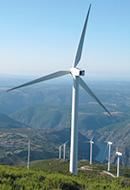
Wind Energy
What is it, how is it converted into electricity and what are its advantages
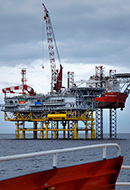
Construction of an offshore wind plant
Everything about offshore wind farm construction.
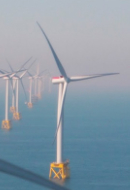
Digitalization of the wind sector
The digitalisation of the wind energy sector, advances and opportunities.
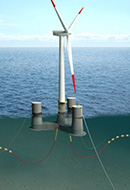
Floating offshore wind
A milestone to boost renewables through innovation.
Wind farms in Europe
In 2022, the total installed capacity reached 254 GW, 8 % more than in 2021. This brings the total to 224 GW from onshore wind farms and 30 GW from offshore wind farms. With 66 GW, Germany continues to lead the way in wind energy generation in Europe, followed by Spain (28 GW), the United Kingdom (28 GW), France (21 GW) and Sweden (14 GW).
Growth of total wind energy capacity in Europe
In addition, Denmark and Ireland have remained the countries with the highest percentage of wind energy in their energy mix, reaching 55 % and 34 %, respectively, of their annual energy production.
Percentage of average annual electricity demand covered by wind energy in 2022
Wind energy met a record 17 % of demand across the EU-27 together with the UK – an increase of 2 % compared to 2021. Wind conditions, especially in northern Europe, were significantly better and coupled with strong installations in Sweden and Finland particularly, allowed for an increase in generation between the EU and the UK.
Outlook 2022-2026
Wind energy will be key in the coming years and will allow European countries to advance in the process of decarbonisation of the economy and continue with the energy transition. WindEurope forecasts that, between 2023 and 2027, Europe will install 129 GW, at a rate of 25.8 GW per year; while the EU will add 98 GW installed, at 19.6 GW per year. However, the latter figure is significantly below the average installation rate of 31 GW needed to meet the EU target of 40 % renewable production by 2030.
The study estimates that 74 % of the new 129 GW expected in Europe over the next five years, will be onshore wind (95 GW) and 26 % offshore wind (34 GW). Up to 500 MW will be floating offshore wind, with projects such as Norway's Hywind Tampen and the first initiatives in France and the UK. In addition, Germany, Spain and the UK will continue to be the countries with the largest fleet of wind installations in Europe.
But is it possible to improve expectations over the next five years? WindEurope highlights the role of governments in resolving the permitting issues that have recently slowed or even blocked wind construction. For the European industry body, introducing policies to streamline the approval and planning process for wind farms is essential for Europe to meet its energy and climate targets.
In addition, the organisation points to the need to support a market design that allows for the full development of renewable energy. According to WindEurope, "Although governments are trying to act in the short-term interests of consumers by implementing measures to protect them from high energy prices, the resulting patchwork of measures across Europe has created an uncertain regulatory environment". The aim of the upcoming EU electricity market design review must be to restore investor confidence, according to the organisation.
Finally, WindEurope insists on investing in grid development and working across borders to develop offshore hybrid structures and energy islands.
A promising future
In addition to the WindEurope report mentioned above, there are other studies and organisations that reinforce the idea that wind energy will play a key role in the necessary energy transition to meet the challenges of climate change and produce clean energy.
Thus, for example, the International Energy Agency (IREA) argues that wind and solar energy are the predominant energy sources to achieve the zero emissions scenario by 2050.
But the benefits go beyond what we can imagine. Already in 2019, KPMG company addressed some revealing contributions of this type of energy in the report 'The socio-economic impact of wind energy in the context of the energy transition' External link, opens in new window. . Key insights include:
External link, opens in new window. . Key insights include:
- Wind energy could supply around 34 % of global electricity demand by 2040 (compared to 4 % today).
- This type of energy can account for 23 % of the required reduction in carbon emissions by 2050, equivalent to the annual emissions of the world's 80 most polluting cities.
- This reduction in emissions could save up to four million lives a year and reduce health costs by up to $3.2 billion annually.
- Wind energy would also employ around 3 million people globally by 2050.




